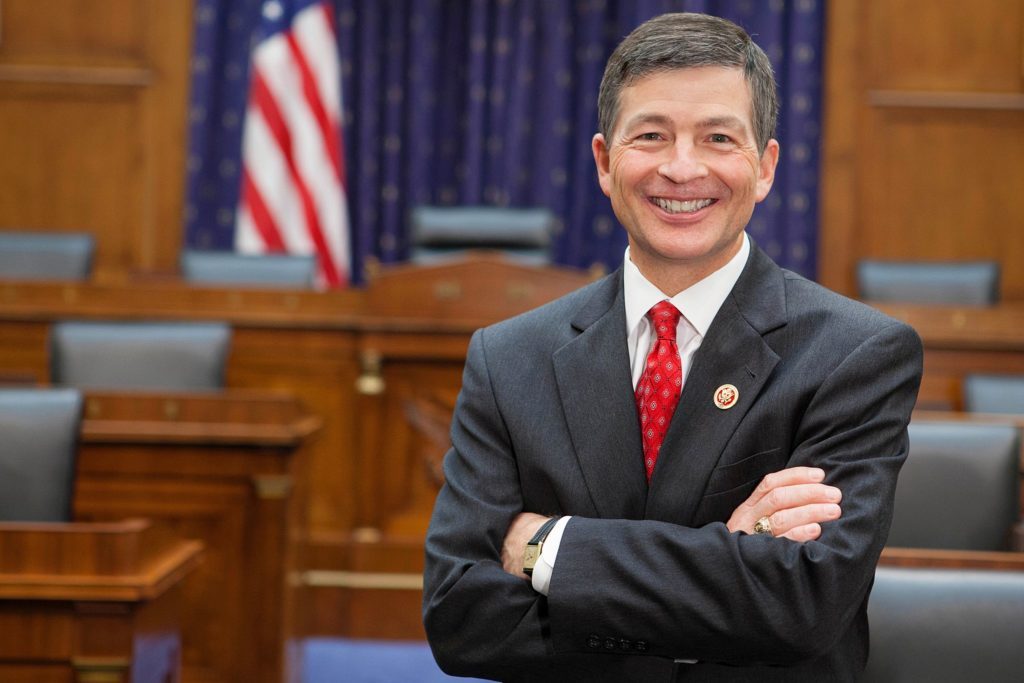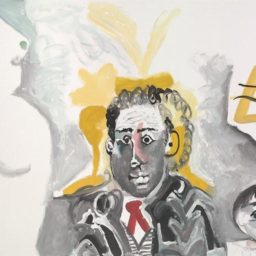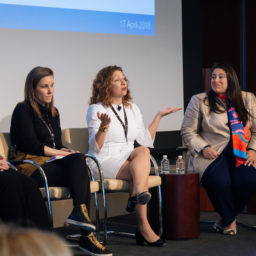Every Monday morning, artnet News brings you The Gray Market. The column decodes important stories from the previous week—and offers unparalleled insight into the inner workings of the art industry in the process.
This week, three stories on the ins and outs of art market regulation….
HOUSE OF HORRORS
On Wednesday, my colleague Eileen Kinsella reported that prominent art law firm Pearlstein, McCullough & Lederman sent a memo warning its US clients that Congress may be on the verge of subjecting all American art sellers to some of the same regulations as licensed financial institutions.
The rumored activity by the House of Representatives Financial Services Committee would force everyone selling art and antiquities—galleries, dealers, auction houses, and more—to implement what are broadly referred to as KYC (“Know Your Client”) measures, as a means of cracking down on money laundering. The memo states that the rumored bill would “likely” reach the House floor during the week of May 14.
If ratified, the Treasury Department’s Financial Crimes Enforcement Network (FinCEN) would then “draft regulations to lay out how dealers in art and antiquities are supposed to establish their anti-money laundering programs.” Possible requirements include ongoing “due diligence and monitoring” measures, some of which would require staff to cross-reference buyers with government watch lists and report “suspicious activity” to federal officials.
Although I’ve been vocal about the need for better professionalization in the art market, this outside-in regulation strikes me as a possible nightmare scenario. Two weeks ago, I wrote the following after a discussion of industry best practices at the Art Business Conference in New York:
But if other spheres of the art market don’t raise the bar themselves, it increases the odds that external regulations will be imposed by clueless politicians whose efforts could actually make matters worse, as longtime art lawyer Jo Backer Laird expressed (in more diplomatic terms).
As a thought exercise, just look at the dangerous blind spots in the US’s recently passed Stop Enabling Sex Trafficking Act, or run back through the lowlights of Congress’s bumbling questions to Mark Zuckerberg about how Facebook works. Then ask yourself how much havoc could result if more scandals motivated someone like Ted Cruz… to legislate the art industry after reading two Jonathan Jones reviews and half-watching “Exit from the Gift Shop.”
To be perfectly honest, I’m not that worried about whether the richest sellers have to implement some annoying bureaucratic compliance measures. For one thing, they have the resources. (Major auction houses, for instance, already abide by anti-money laundering measures.) More importantly, they’re also the sellers that could realistically be used in money laundering schemes.
Neither of the above is true for most galleries and dealers. They are already stretched too thin from a staff and expenses standpoint, as we were reminded again at Frieze New York this week. Having to bolt on a heavy, federally approved monitoring arm could tip some of these struggling small businesses over into the abyss.
This would be especially unforgivable because their sales reach neither a volume nor a price threshold useful to fraudsters. The Pearlstein memo mentions that the House committee heard testimony from New York’s district attorney about cases of money laundering in the art trade, highlighted by an alleged $50 million scam centered on a $9 million Picasso. Granted, I wasn’t in the room. But I’m willing to bet that none of those cases involved increasingly desperate mid-level or emerging galleries hoping to turn over a few hundred thousand bucks in sales for the year, i.e. the rank and file of American art sellers.
To me, this is why it would be insane to subject the entire industry to the same federal regulatory regime. It would be like a corporation suddenly notifying all of its employees that they have to pass a physical to keep their jobs, but the exam would be the same one the Navy uses in SEAL team training.
Next thing you know, Joyce in human resources is getting pink slipped for failing to swim a 17-mile lap around an island, and the retirement party being planned for Dave in accounting has to transform into a memorial service because the poor geezer’s heart exploded while he was trying to haul a 150-pound raft atop his head across a scorching beach.
In fairness, there’s a lot we don’t know about the rumored legislation. Kinsella’s requests for comment elicited a denial from the FinCEN resource center and no response at all from a House Financial Services Committee official. But if the Pearlstein memo is accurate, I fear the results could be more harmful than helpful to most businesses in the trade.
[artnet News]
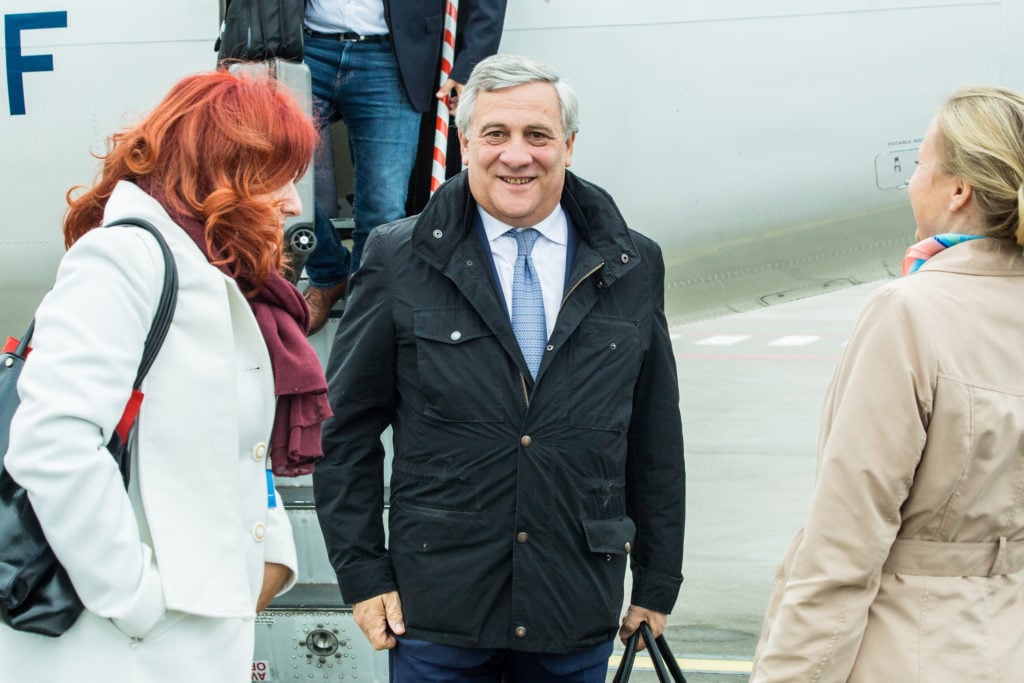
Antonio Tajani, President of the European Parliament, whose new anti-Money Laundering Directive will affect almost all EU-based art sellers. Photo by Aron Urb, via Flickr.
FLEE MARKET
Just a few days before the Pearlstein memo surfaced, Anna Brady of The Art Newspaper reported that the European Union had advanced even further along similar regulatory lines. Roughly two weeks earlier, EU officials approved the fifth Anti-Money Laundering Directive—a new set of requirements also based around the KYC principle. Here’s Brady on its key tenets:
The regulations, which come into force in 2019, will cover all businesses selling works of art with transactions of €10,000 or more, irrespective of the payment method (credit card, bank transfer, cheque or cash), compelling traders to verify the identity of customers before making a transaction. Lower-value linked payments adding up to €10,000 or more will also now be covered.
Incidentally, two professional organizations in the industry have already raised red flags about the new rules, largely due to the issues we just covered in the previous item. CINOA, the International Confederation of Art and Antique Dealer Associations, formally opposed the act out of concerns that the trigger point should be higher than a scant €10,000. And although the British Art Market Federation took no official stance on the policy, chairman Anthony Browne emphasized the need to work with government officials to “minimize the administrative effect on small businesses.”
Rather than reheat the same point provoked by the possible US Congressional regulations, let’s look at the Anti-Money Laundering Directive in a slightly different context. Ever since the Brexit vote, various pundits and industry pros—including, as fate would have it, Anthony Browne—have hypothesized that parachuting out of the EU could give Great Britain the airspace to ditch onerous EU art market regulations and improve its competitiveness with other regions. This recent rule change in Brussels builds at least some real world muscle onto that theory.
Granted, I’m not saying this move alone would spark emerging and midlevel galleries to flee Europe en masse and resettle in the UK. London’s rental market alone should give art sellers pause. Although property consultancy Knight Frank found that the Old Smoke ranked only 101st in terms of the average price increase for real estate among European cities in 2017, similar property in Berlin, which topped the rankings with a 20.5 percent rise, was still only about one-third the cost of its London equivalent.
Still, the EU’s Anti-Money Laundering Directive at least cracks the door to new opportunities for the British art market should Brexit itself finally go through. Whether or not the size and lobbying power of that market is substantial enough for Theresa May to care is another matter entirely.
[The Art Newspaper]
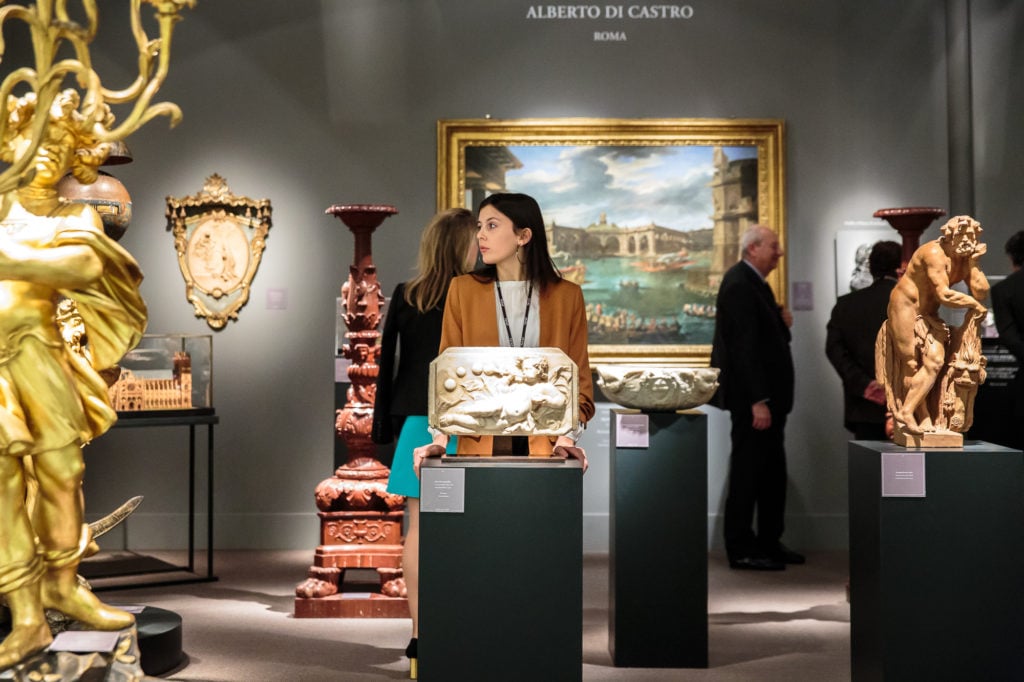
Alberto di Castro’s stand at TEFAF Maastricht. Photo by Natascha Libbert.
JOIN THE CLUB (OR DON’T)
Finally this week, TEFAF (in conjunction with ArtTactic’s Anders Petterson) released its first ever report on the art finance market, and some jackass named Tim Schneider wrote a recap of some of the major findings. At the time, my main takeaway was that borrowing against art is currently a nonstarter for the majority of even the most commercially successful galleries and dealers. Not to get all Spider-Man vs. Spider-Man about it, but with a few more days to digest the study, I think it’s also critical to add on just how tiny a niche this is in the grand scheme of the lending market—and what that means for its future.
To my original point, out of a survey of 142 dealers—all of whom participated in one of TEFAF’s three fairs—only about 31 percent even expressed an interest in financing their businesses by borrowing against their art. Just 15 percent said they had actually done it, and the vast majority of those loans appear to have been made to the dealers themselves as high net worth individuals, not to their businesses.
Now, in most cases, 142 respondents wouldn’t qualify as much of a research pool. However, I can rock with Petterson’s methodology here because of an important caveat about the realities of art-secured lending. As he notes in the report’s early pages…
Although the sample is not necessarily representative of the dealer and gallery population as a whole, particularly due to the stringent vetting and selection criteria of the TEFAF art fairs, it does represent the type of dealers and galleries that financial institutions and lending providers would, in most cases, consider ‘acceptable’ risks for lending purposes.
What’s the problem with the rest of the field? According to conversations with potential art lenders of all types, on a micro level, most art sellers simply don’t emphasize due diligence enough. The prospects of forgeries and stolen goods scare the hell out of financiers, and few dealers have implemented strong enough best practices to satisfy lenders’ concerns about accepting possibly worthless collateral.
Now, smaller galleries can certainly improve their operations. Based on the US and EU government regulations now looming over them like grand pianos rigged above an unsuspecting Charlie Chaplin, they may have to. The question is how much it will actually matter to bankers and asset-secured lenders.
The TEFAF report estimated that the global art finance market hovered somewhere between $18 billion and $20 billion in 2017, but with only about eight to 10 percent of that money likely going to actual art sellers. (Collectors sucked up the rest of the pool.) If $18 billion to $20 billion sounds like a lot to you, consider that a 2017 report from TransUnion estimated the size of the global market for home equity financing—meaning, loans or lines of credit where the borrower puts up their home as collateral—to be $13 TRILLION.
Which contextualizes art finance as, at this point, a dimple on the ass of an elephant.
On one hand, this means there’s tremendous room for growth in art financing, especially for dealers. On the other, Petterson’s conversations with traditional and specialty lenders alike lead me to believe that they’re not particularly eager to start spraying cash at galleries and dealers even if they button up their procedures, for the simple reason that there isn’t much money to be made from it.
Some aspects of the overall art market will probably never change. The unpredictable and irregular sales patterns, the shiftiness of artwork valuations, the high attrition rate for galleries and dealers (not necessarily because they’re so special, but because it’s really hard to sustain a small business of any kind)—all of these are systemic issues that can’t be regulated away.
To paraphrase what I said while moderating a panel on the report’s release this Friday, galleries are the new nightclubs: Great investments for people who only care about chasing the cool, and awful investments for people who only care about making a profit.
So long story short, I don’t have high hopes for traditional art finance’s usefulness for most art sellers. While they need solutions badly, I’d suggest they not look to banks and art-secured lenders to scoop them out of the whirlpool.
[artnet News]
That’s all for this edition. ‘Til next time, remember: Another word for “regulation” is “protection,” but not every protection is needed everywhere.
